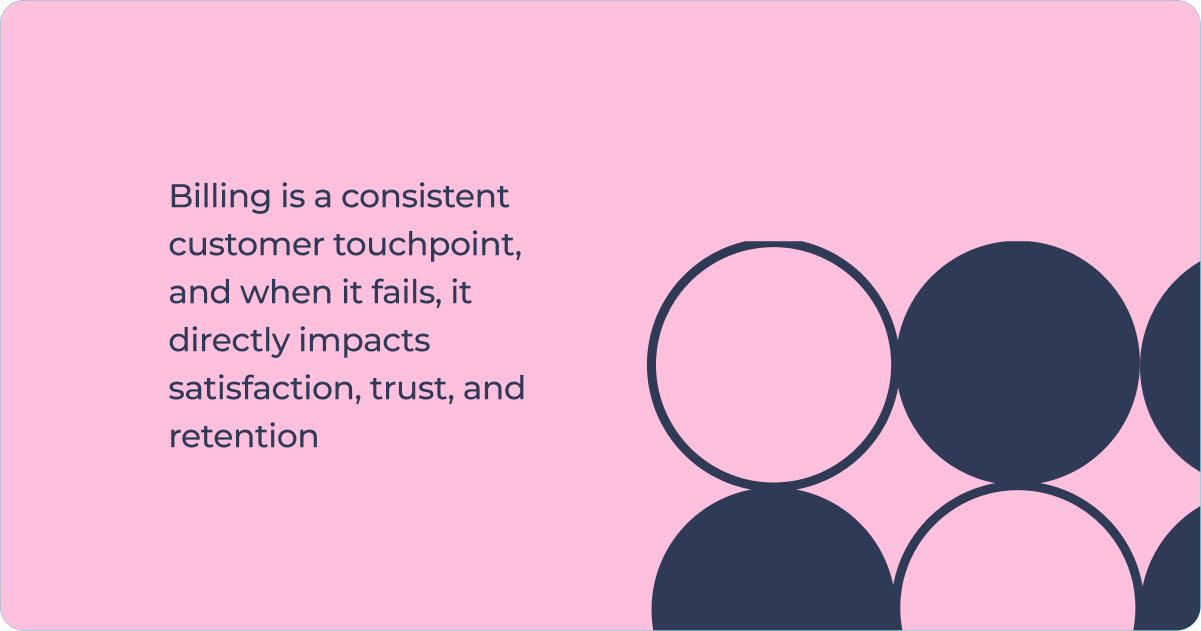Since MIT offered the first Managed Service Provider (MSP) functions in the ’60s, the industry has grown in revenue and services.
For instance, in 2024, global IT services spending was roughly $1.5 trillion. This includes $441 billion credited to managed services. By the end of 2025, this figure is expected to be over $500 billion. The estimate is a growth of 11–14% every year.
What makes MSP billing special, and how can you, as an MSP, capitalize on this growth and how does your billing architecture feature in this growth?
Hidden Complexity and Billing Simplicity
As MSPs evolved from problem solvers to trusted advisors, their pricing and billing portfolios became more complex. Many MSPs now manage:
- Large service catalogs
- Complex pricing models
- Numerous billing scenarios
- Pressure from major cloud and software vendors demanding accurate billing execution
These variables must be processed and presented efficiently. But this complexity also creates opportunities. According to industry reports, MSPs that adopt automated billing systems reduce revenue leakage and improve client satisfaction significantly.
'What Am I Paying For?'
With so many service items, clients often struggle to understand their invoices. MSP pricing typically follows models like:
- Per device
- Per user
- Per service
- Tiered service levels
- Fixed or hourly rates
Clients want predictability, and no surprises in monthly invoices. Transparent billing is now a competitive advantage. Modern MSP invoicing software ensures clarity by generating detailed, itemized invoices that align with service usage.
Getting the Best Out of Your Infrastructure
MSPs often have optimized operations—service catalogs, RMM and ITSM systems, and skilled teams. The challenge lies in translating these elements into accurate billing items. Leveraging existing data flows and automating billing events is key to improving cash flow and integrating new services quickly.
Future-Proof Your Billing and Speed Up Cash Flow
An optimized MSP billing platform should:
- Integrate seamlessly with operational tools (PSA, RMM, CRM)
- Support pricing flexibility and vendor compliance (e.g., Microsoft billing rules)
- Provide real-time visibility into billing and contract status
This transparency empowers clients to monitor spending and MSPs to maintain predictable revenue streams.
Trends Shaping MSP Billing
The MSP industry is evolving rapidly:
- Automation and AI: Automated invoicing and AI-driven anomaly detection reduce manual errors and accelerate cash flow. AI predicts billing cycles and flags discrepancies in real time.
- Usage-Based and Subscription Pricing: Recurring revenue models dominate MSP billing, requiring flexible rating engines.
- Cloud Billing Complexity: Multi-cloud environments demand MSP cloud billing software that integrates with hyperscaler marketplaces and supports real-time metering.
- Integrated Platforms: Billing systems now combine PSA, RMM, and financial tools for end-to-end automation.
- Client Transparency: Self-service portals and detailed invoices improve trust and reduce disputes.
Why MSP Billing Automation Matters
Manual billing is time-consuming and error-prone. Automation delivers:
- Efficiency: Eliminates repetitive tasks like data entry and reconciliation
- Accuracy: Reduces billing errors and revenue leakage
- Predictable Cash Flow: Automated invoicing ensures timely payments
- Scalability: Handles complex pricing models and large client bases effortlessly
- Customer Satisfaction: Provides clear, detailed invoices and flexible payment options
Key Features of Modern MSP Billing Platforms
When selecting an MSP billing system, look for:
- Automated Invoicing & Recurring Billing
- Flexible Pricing Models: Tiered, usage-based, and hybrid options
- Data Mediation Engine: For accurate usage mapping
- Multi-Currency & Tax Compliance
- Integration with PSA/RMM and Accounting Tools
- Advanced Analytics: Profitability dashboards and anomaly detection
- Self-Service Portals: For client transparency and convenience
How to Use Billing to Your Advantage in an Automation-Driven World
- Automate Everything: From invoice generation to payment reminders
- Standardize Processes: Reduce complexity and errors
- Leverage Analytics: Use billing data for pricing optimization and upsell opportunities
- Ensure Compliance: Align with tax and accounting standards
- Focus on Client Experience: Clear, detailed invoices build trust and loyalty
Billing Help MSPs Evolve
MSP billing platforms need to be data-driven, and support decision-making using data. This would help improve operations and customer relationships, things that are not very often considered when deciding on billing architecture.
Well, maybe it's time to reconsider how billing architecture is seen within an Managed Service Provider.



